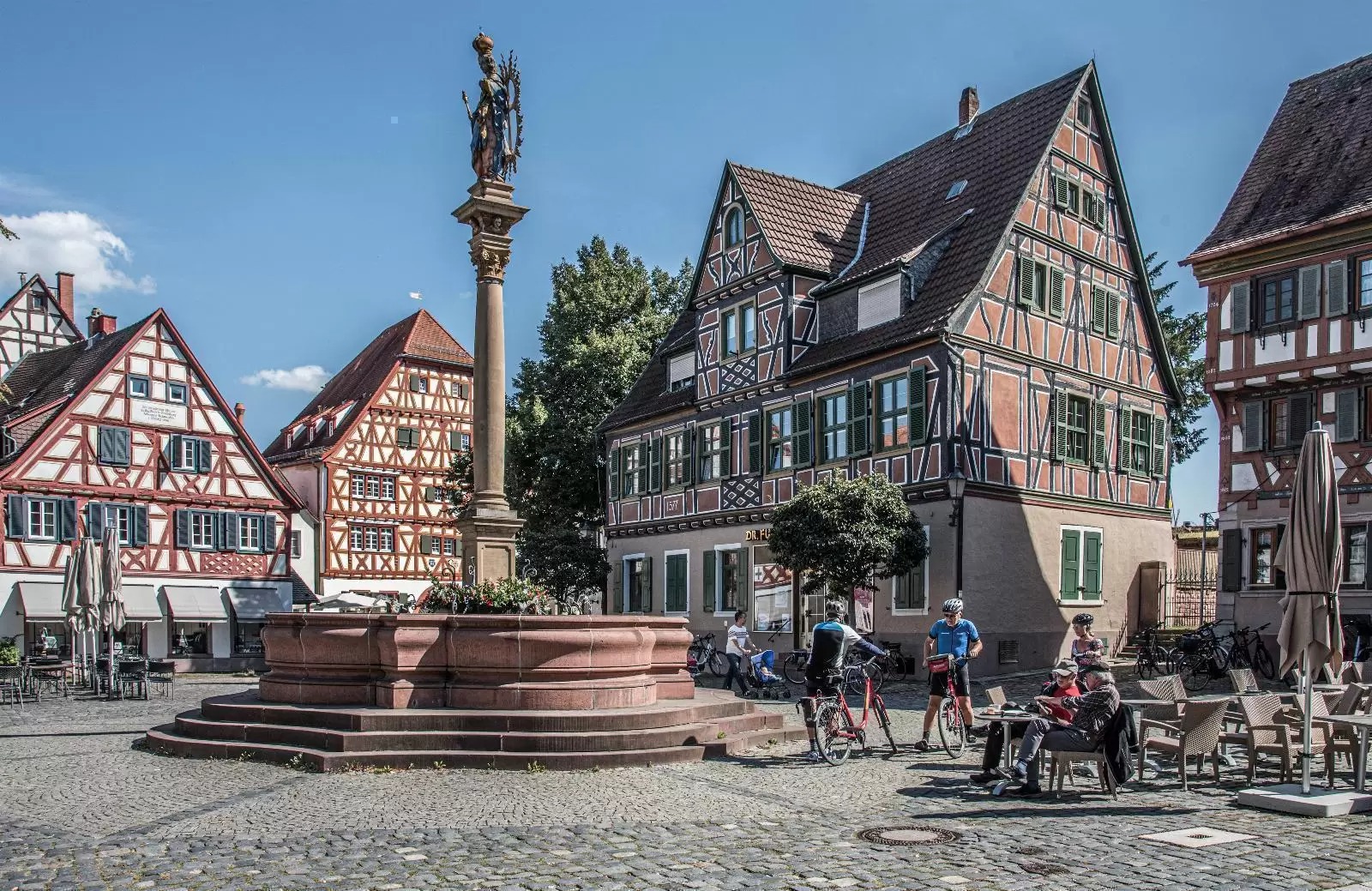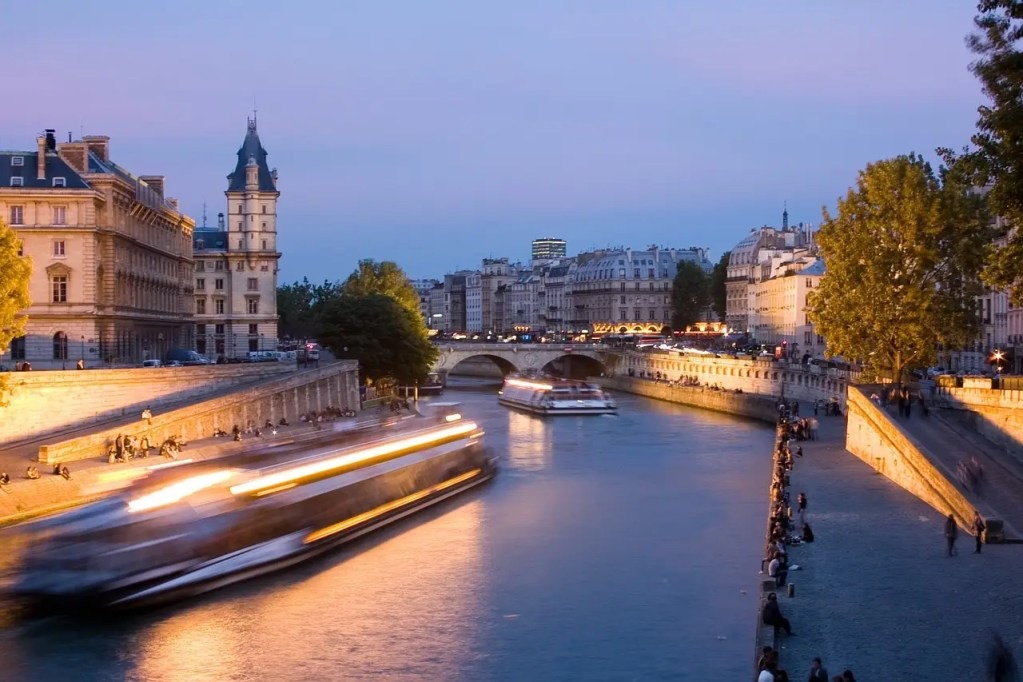You like history, cities, and nature, so you’ve decided to visit Germany. There are many guides to help plan your trip, but they mostly talk about big cities like Berlin, Munich, Hamburg, and Frankfurt. These cities are great and worth visiting, but there’s more to see, so here are Best Places to Visit in Germany for First Time
1. Freiburg Im Breisgau, Baden-Württemberg
Freiburg im Breisgau is a highly livable city in southern Germany, known for its convenient access to neighboring countries and the nearby Black Forest’s outdoor activities and attractions. Often called Germany’s ‘sustainable city,’ Freiburg enjoys a sunny location near the Rhine river in Baden-Württemberg. The city is famous for its ecological efforts, vineyards, and vibrant university atmosphere.
Tourists will find plenty to explore, including the medieval alleys and historic houses clustered around the base of the Minster, commonly referred to as ‘Freiburg cathedral.’ Freiburg is located on the western edge of the Black Forest, close to the Rhine river in Baden-Württemberg, southwest Germany.

The city’s history dates back to the early Middle Ages, tied to the noble German Dukes of Zähringen. A castle once stood on the hill behind the historic city center (the Schlossberg), and the settlement at the foot of the hill was granted full town rights in 1120 by one of the last dukes in the line.
Freiburg, meaning ‘free fortified town,’ became prosperous thanks to the charter granting market rights and the silver mines in the nearby Black Forest. The city has its own airport, but the EuroAirport Basel Mulhouse Freiburg, located nearly 50 kilometers away in France, is also convenient. The closest major international airport is Zurich in Switzerland.

Freiburg lies on a major rail link running north-south between Basel and Karlsruhe. The train station also connects to the Black Forest, with routes towards Titisee and Donaueschingen. For drivers, the easiest routes are via the nearby A5 motorway alon.
2. Trier Rhineland Palatinate
Situated along the Mosel River in Rhineland Palatinate, Trier is recognized as Germany’s oldest city. Founded by the Celts in the late 4th century BC, it was originally named Treuorum. About 300 years later, the Romans took over and renamed it Augusta Treverorum, meaning “The City of Augustus among the Treveri”. During the Tetrarchy period in the late 3rd and early 4th centuries.

Trier was one of the Roman Empire’s four capitals and became the oldest bishop’s seat north of the Alps. Politically influential, especially in the Middle Ages, the archbishop-elector of Trier was one of the seven electors of the Holy Roman Empire. Due to its prominence during both the Roman and Holy Roman empires, Trier boasts nine UNESCO World Heritage sites.
3. Wuppertal North Rhine – Westfalia
Wuppertal is a city of roughly 350,000 people in northwestern Germany, not far from Düsseldorf and Cologne. It spreads out along the Wupper River and is surrounded by hills and countryside. Between the 18th and early 20th centuries it became one of Germany’s most important industrial centers, developing distinct working-class and bourgeois neighbourhoods. Today the city is home to outstanding cultural attractions, great museums and plenty of parks.

Walk the city streets and admire buildings of various size and scale. Check out the Brill neighbourhoods for a collection of 19th-century villas or wander through Ölberg to see historic working-class houses. Catch the iconic Schwebebahn suspended monorail to crisscross the city and pick out grand old churches and administrative buildings. The monorail began frequent services in 1901 and remains one of the city’s distinguishing features.
Visit the Von der Heydt Museum to see an excellent selection of paintings from the 19th and early 20th centuries. Be sure to drop by the Engels-Haus, a museum where you can learn about the life and work of social philosopher Friedrich Engels. Nearby you’ll find the Museum of Early Industrialization, focusing on the social and political context of the era and containing old tools and machines.
Take a break and relax in the Waldfrieden Sculpture Park, dotted with works by British artist Tony Cragg. Kids and animal lovers will want to head to the Wuppertal Zoo. The 59-acre (24-hectare) complex is home to gorillas, tigers, elephants and many other exotic species.
For a great night out, book tickets to a show in the magnificent Stadthalle Concert Hall. It was the town hall at the end of the 19th century but has recently been converted into one of the most elegant venues in the city. Dance fans should attend a production by the renowned Pina Bausch Company in the Opera House or Theatre Foyer. Wuppertal is a dynamic little city with fascinating architecture and a well-developed cultural scene. Stroll the streets or ride the monorail, take in the sights and soak up the history.
4. Rothenburg ob der Tauber Bavaria
Travel back in time to the charming medieval town of Rothenburg ob der Tauber. Here, you can explore museums dedicated to crime and Christmas, admire centuries-old architecture, and partake in wine and music festivals. Nestled in Germany’s picturesque Bavaria region, this town is perfect for relaxation and cultural immersion.

Rothenburg ob der Tauber’s heart is its medieval quarter, which has remained largely unchanged since the 11th century. Wander along the battlements and discover over 40 gateways and towers. The cobblestone streets and charming squares are lined with colorful gabled houses. One of the most iconic sights is the Plönlein, a picture-perfect half-timbered house. St. Jacob’s Church houses exquisite woodcarvings by the esteemed sculptor Tilman Riemenschneider. For stunning views, climb the 200-foot-tall (60-meter) town hall tower that dominates Marktplatz.
Dive into German history and culture at the town’s museums. The Medieval Crime Museum showcases laws and punishments from the Middle Ages. The Imperial City Museum, located in a 13th-century convent, features period furniture and art. The Old Rothenburg Craftsman’s House offers a glimpse into the life of craftsmen in the 1200s.
Relax in the Asian Water-Garden, where waterfalls and ornamental ponds are surrounded by cherry trees and Asian plants.
In the summer, the town bursts into life with various festivals. The Taubertal Open Air Festival features performances by international rock bands. The Weindorf wine festival offers local wine and food, including grilled sausages. During the Imperial City Festival, parades reenact the town’s history. Rothenburg ob der Tauber is a delightful blend of history, culture, and scenic beauty, making it a must-visit destination in Bavaria
5. Bremen
Bremen’s roots as a significant city date back to the 8th century when it began as an episcopal city and merchants’ settlement. Together with Bremerhaven, it forms Germany’s smallest federal state, captivating tourists with its vibrant metropolitan charm. This city harmoniously blends tradition with modernity and urban sophistication with northern German friendliness. Bremen is notably compact, offering a unique blend of history, culture, and lifestyle. The historic Marktplatz square, surrounded by bustling streets, serves as the city’s lively center. Here, the stone Roland statue stands opposite St. Peter’s Cathedral, symbolizing independence and earning a spot on the UNESCO World Heritage list alongside the impressive Town Hall. Nearby, the iconic Town Musicians of Bremen are immortalized in a charming bronze statue.

A walk along Böttcherstrasse leads to the Schlachte promenade, where ships from around the globe once docked. Classic vessels like the Alexander von Humboldt can still be seen. From this promenade, it’s a short walk to Schnoor, a neighborhood in Bremen’s medieval center, known for its narrow alleys and historic buildings. Alternatively, a stroll along the Culture Mile offers visits to the internationally acclaimed Kunsthalle art gallery or a quick trip into space with Airbus. Exploring Bremen by bike is highly recommended, allowing for relaxing breaks in its extensive green spaces and picturesque parks.
6. Ladenburg Baden-Württemberg
Ladenburg is a charming town in northwestern Baden-Württemberg, Germany, situated on the right bank of the Neckar River, about 10 km northwest of Heidelberg and 10 km east of Mannheim.

The town boasts a rich history that dates back to the Celtic and Roman eras when it was known as Lopodunum. In 98 AD, Emperor Trajan elevated it to city status. Ladenburg’s historic old town, with its distinctive timber-framed houses, harks back to the Late Middle Ages when it was the capital of the Prince-Bishopric of Worms. One of the town’s most famous residents was Carl Benz, the inventor of the first automobile. The Bertha Benz Memorial Route, named after Carl’s wife Bertha, passes through Ladenburg.
As early as 496, the Merovingians established a royal court in Ladenburg, which eventually became known as a palace. Lobdenburg became the capital of the Lobdengau region. In 628, Frankish King Dagobert I transferred the town and its surrounding area to the Diocese of Worms. By 874, King Ludwig the German had documented the town as Lobetenburg. During the Carolingian period, Ladenburg was one of the few towns designated as Civitas Publica, indicating the continued presence of the royal court. By the 10th century, the first medieval city walls were constructed. In 1006, King Heinrich II, later canonized as a saint, confirmed all possessions of the cathedral monastery of Ladenburg to the Bishop of Worms and granted the bishop the county of Lobdengau five years later.
7. Bamberg, Bavaria
Bamberg is a town in southern Germany, located in the northern part of Bavaria. It exemplifies a central European town with a predominantly early medieval layout and numerous surviving ecclesiastical and secular buildings from the medieval period. When Henry II, Duke of Bavaria, became King of Germany in 1007, he established Bamberg as the seat of a bishopric, envisioning it as a ‘second Rome’. Notably, the town illustrates the connection between agriculture (such as market gardens and vineyards) and urban distribution.

Starting from the 10th century, Bamberg became an important link with the Slavic peoples, particularly those from Poland and Pomerania. During its peak prosperity from the 12th century onwards, the town’s architecture had a significant influence on northern Germany and Hungary. In the late 18th century, Bamberg emerged as a center of the Enlightenment in southern Germany, attracting renowned philosophers and writers like Georg Wilhelm Friedrich Hegel and E.T.A. Hoffmann.
The street layouts of Bamberg’s three historic core areas still retain their medieval characteristics. The numerous historic buildings in these areas are genuine. Since the 1950s, Bamberg has implemented a continuous restoration program for its historic properties and areas. This program followed a series of small projects (known as the “Bamberg model”) rather than large, ambitious schemes, resulting in a uniformly high level of conservation throughout the town.
Learn More about Germany: www.deutschland.de
Read about USA Election: JD Vance Wife




